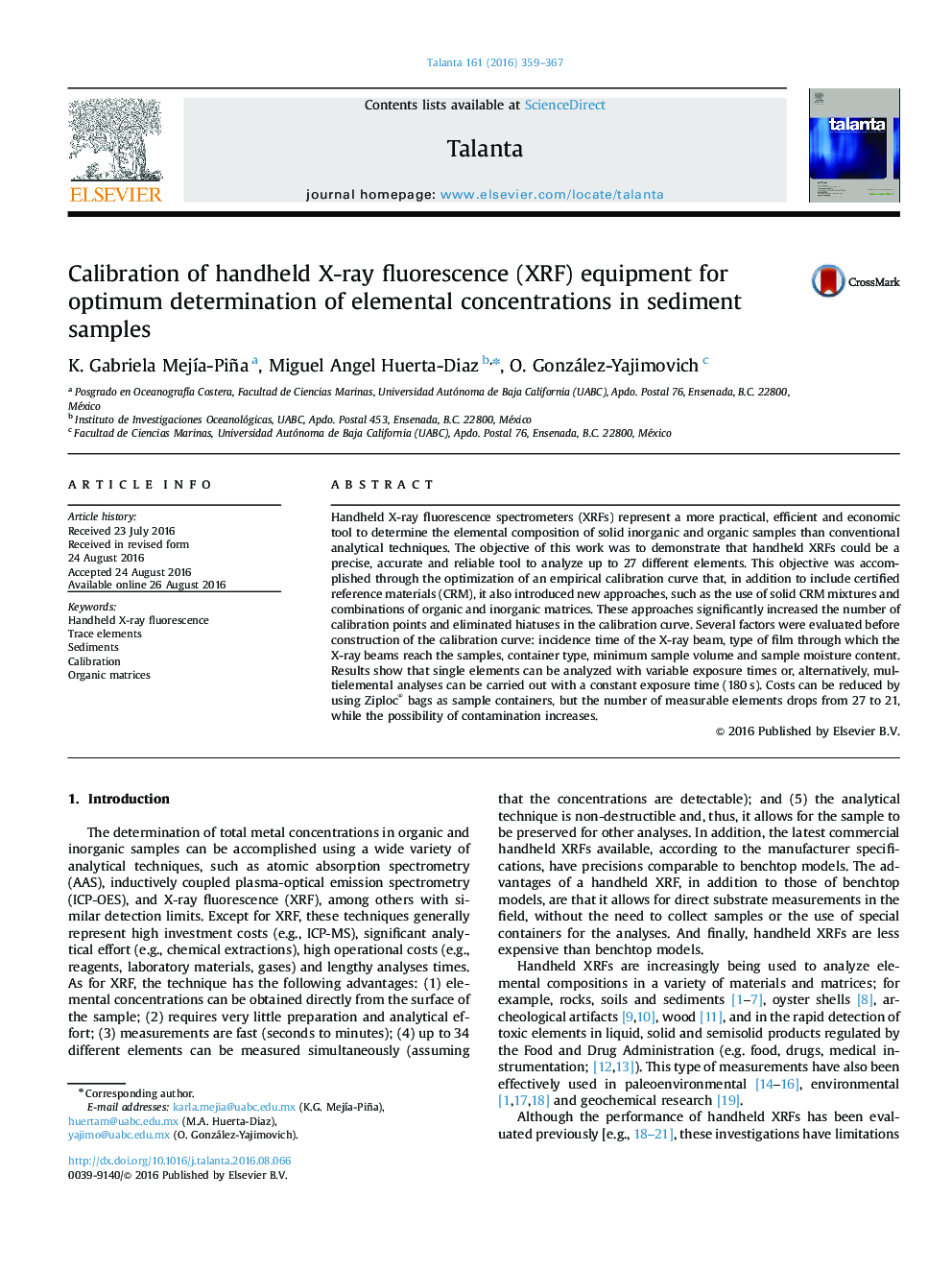| Article ID | Journal | Published Year | Pages | File Type |
|---|---|---|---|---|
| 1241725 | Talanta | 2016 | 9 Pages |
•Handheld XRF is a reliable tool for determining solid sample elemental compositions.•Use of CRM solid mixtures increases number of observations in the calibration curve.•Combination of organic and inorganic matrices for XRF calibrations is a viable option.•Calibration of 27 of the 34 elements measured by the handheld XRF was accomplished.•Ziploc type bags can be used as containers if contamination tests are carried out.
Handheld X-ray fluorescence spectrometers (XRFs) represent a more practical, efficient and economic tool to determine the elemental composition of solid inorganic and organic samples than conventional analytical techniques. The objective of this work was to demonstrate that handheld XRFs could be a precise, accurate and reliable tool to analyze up to 27 different elements. This objective was accomplished through the optimization of an empirical calibration curve that, in addition to include certified reference materials (CRM), it also introduced new approaches, such as the use of solid CRM mixtures and combinations of organic and inorganic matrices. These approaches significantly increased the number of calibration points and eliminated hiatuses in the calibration curve. Several factors were evaluated before construction of the calibration curve: incidence time of the X-ray beam, type of film through which the X-ray beams reach the samples, container type, minimum sample volume and sample moisture content. Results show that single elements can be analyzed with variable exposure times or, alternatively, multielemental analyses can be carried out with a constant exposure time (180 s). Costs can be reduced by using Ziploc® bags as sample containers, but the number of measurable elements drops from 27 to 21, while the possibility of contamination increases.
Graphical abstractFigure optionsDownload full-size imageDownload as PowerPoint slide
